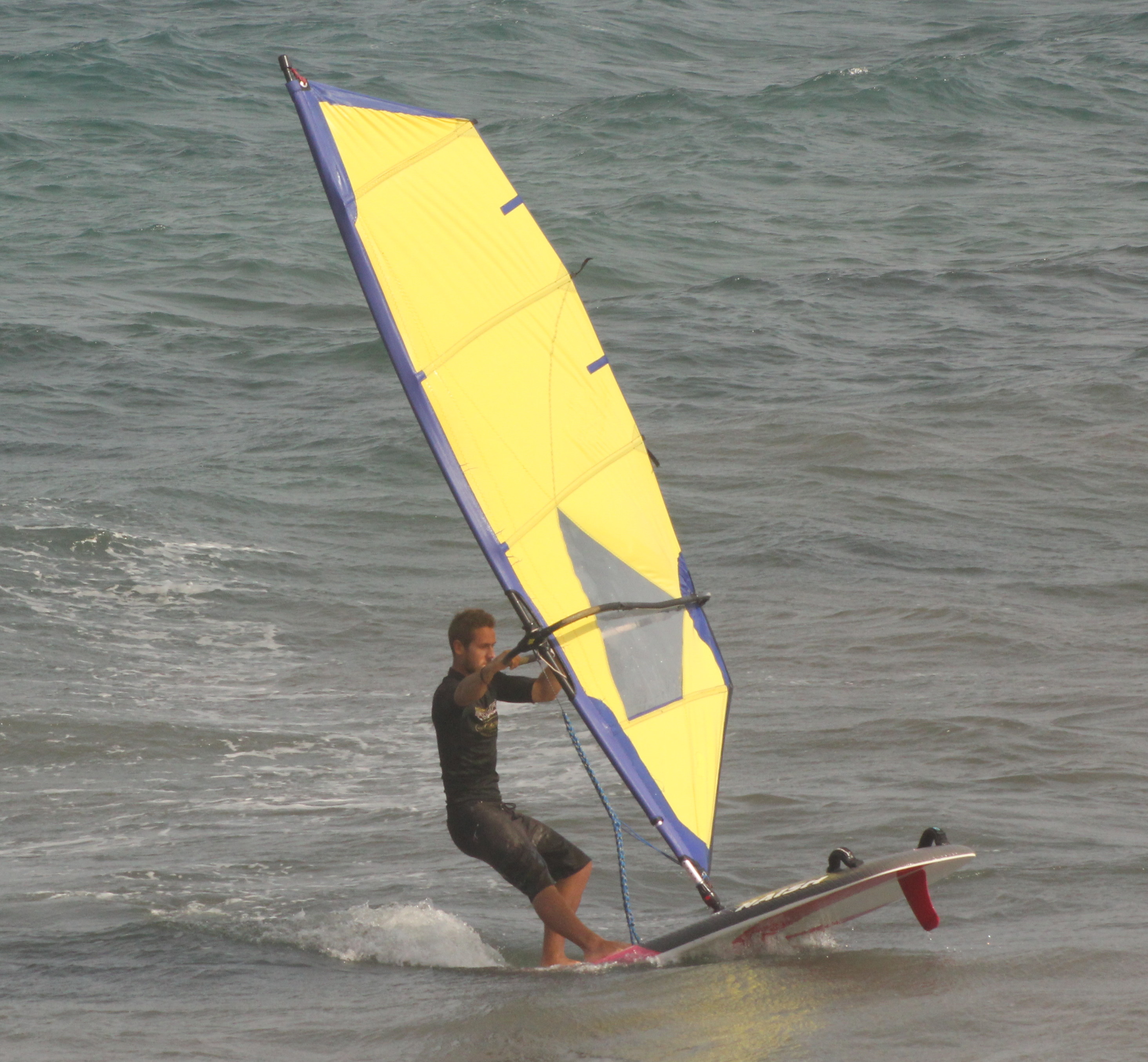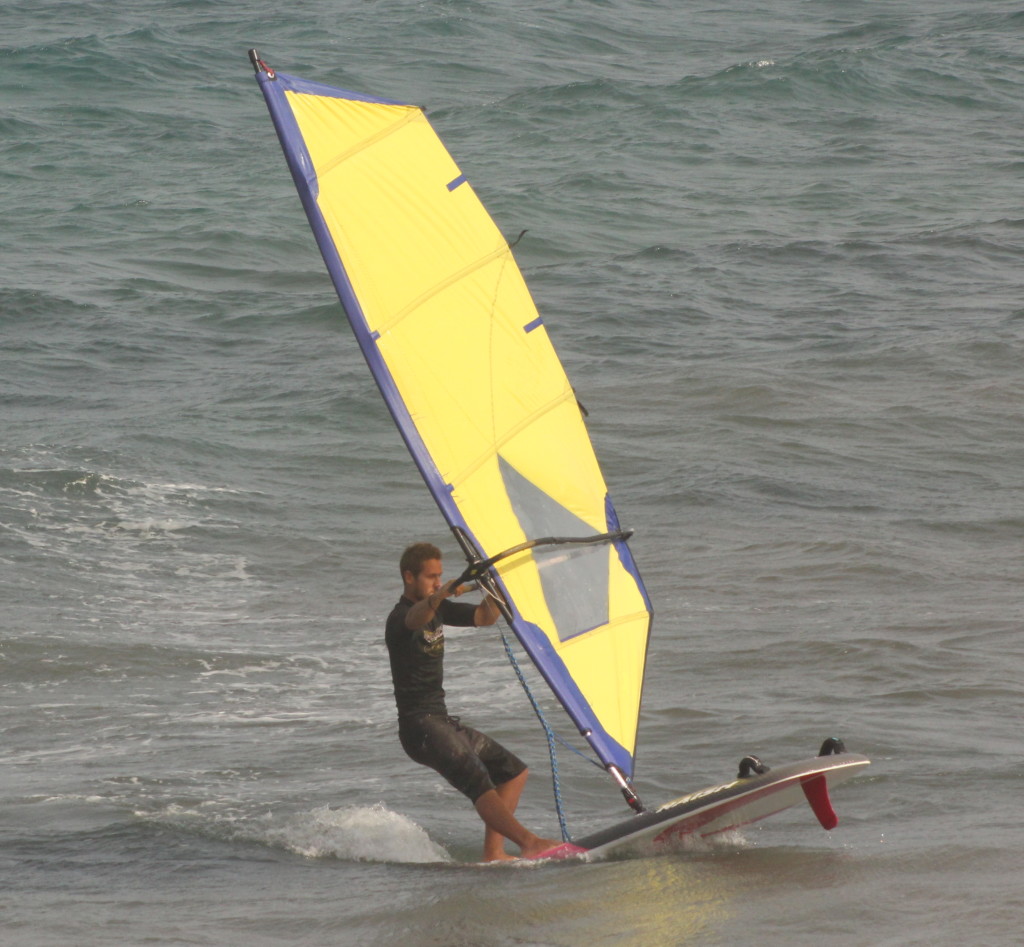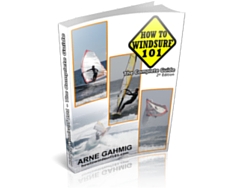What to do? We arrive at the surf spot and there are only 10 knots blowing. Some might say that the day is ruined. That we are cursed to sit on the beach and tell stories of epic windsurfing sessions. Others might say it is time to try kitesurfing. However, it is still worth hitting the water with a board and sail, albeit some big kit.
Low wind conditions give us the posibility to gain sail control and try out new manoeuvres with less likelyhood of falling in. When I teach beginners I frequently practice sailng on the lee side, the heli tack or a sail stall (among others) mainly to stay entertained, but also to develop my skills. I know that every attempt even in low wind contributes to getting the hang of a manoeuvre with more wind.
Check out this video of how many things you can do in low wind.
So here are a couple of things you can try to master in low winds:
Leeside
You can either stay on the same course and move around the mast or you can luff up into the wind as a tack and stay on the wrong side. The trick is keeping the front arm straight and controlling the sail power by pushing with the back hand.
Clew first
Again we have two options: Either by letting go of the front hand and flipping the sail (the clew past our face) until the clew is in front. The other option is to do a gybe all the way just before shifting the sail. We continue sailing in this stance.
Fin first
This is probably the most difficult one to get the hang of as it takes some body tension to keep the board with the fin first. The easiest way is to luff up in to the wind until the board is pointing into the wind and already on the new tack. Then, rather than jumping onto the new side and we walk to the bow of the board. The back foot goes as far to the bow as possible and weighs it down. This way the back of the board is lifted out of the water and the fin is in the air. At this point the board is really unstable and will most likely try to shoot out from under us. To avoid this we must keep the sail as far over the mast foot as possible and keep our body tense. Here it is hard to explain as so many things can happen. All I can say is that we must lean far forwards, putting pressure on the mast foot while keeping the weight far enough on the bow to lift the fin out of the water.
Helicopter tack
I use this a lot in my lessons, mainly just to entertain myself but also because each one is practice. We begin the tack the same way as a normal tack except that the front hand stays on the boom. Then, just when we would change sides we lean the sail forwards (without any pressure whatsoever as that would make it difficult to lean the sail forward). Once the sail is leant forward we slowly put pressure with the back hand and our body leans onto the sail. It is important to keep the front arm straight throughout all this process. We maintain this position until the board has turned onto the beam reach, even a broad reach, and then we rotate our body and sail so that the clew turns through the wind. This way, when the sail is shifted it is not as violent.
Upwind 360
This one starts in the same way as the helicopter tack but instead of shifting the sail on the new tack after rotating the clew through the wind, we hold on to the boom with the back hand, put all our weight on the back foot as far to the stern as possible to the board can rotate over this point. If we don’t put the weight so far back we will just be pulled over forwards and into the water.
Sail stall
By far my favorite move. We throw the sail away into the wind while on a close haul so that the sail floats (hovers) over the water until the wind lifts it up again and back into our hands.
Duck tack
While on a close haul we shift our feet to a switch stance and lean the mast onto the windward side and into the wind. Once the sail is past our body, i.e.. the mast close tot he water surface we throw the clew towards the water so that the wind lifts the sail up again towards us and leaves us on the lee side. In this position we push the sail down to the back of the board hard to luff the board into the wind. Once the board has turned into the wind we sheet in on the new side while leaning the mast forward so that the board keeps turning onto the new tack.
And then of course comes the combination of all of these. Each of these are like dance moves and once we get them down we can combine them. Examples of these are the sail stall into helicopter tack, half the duck tack into the last half of the upwind 360. All this jumping and dancing around on the boards with the sail ends up building sensitivity for the sail control which ends up improving our skills in strong winds also.







Trackbacks/Pingbacks